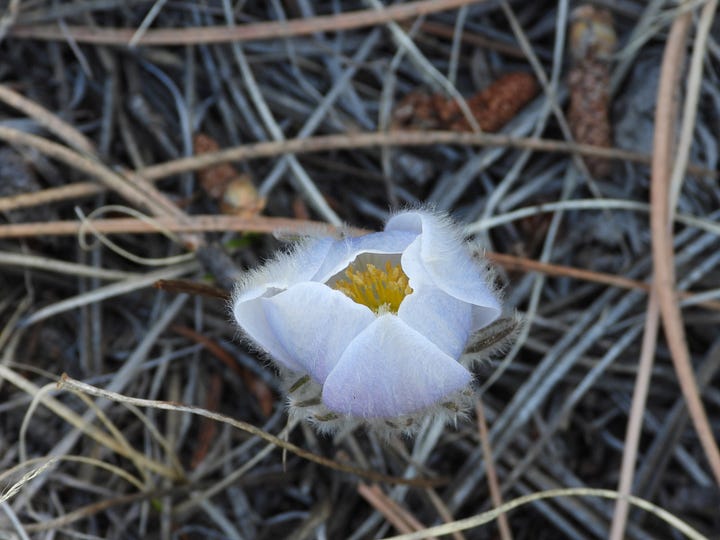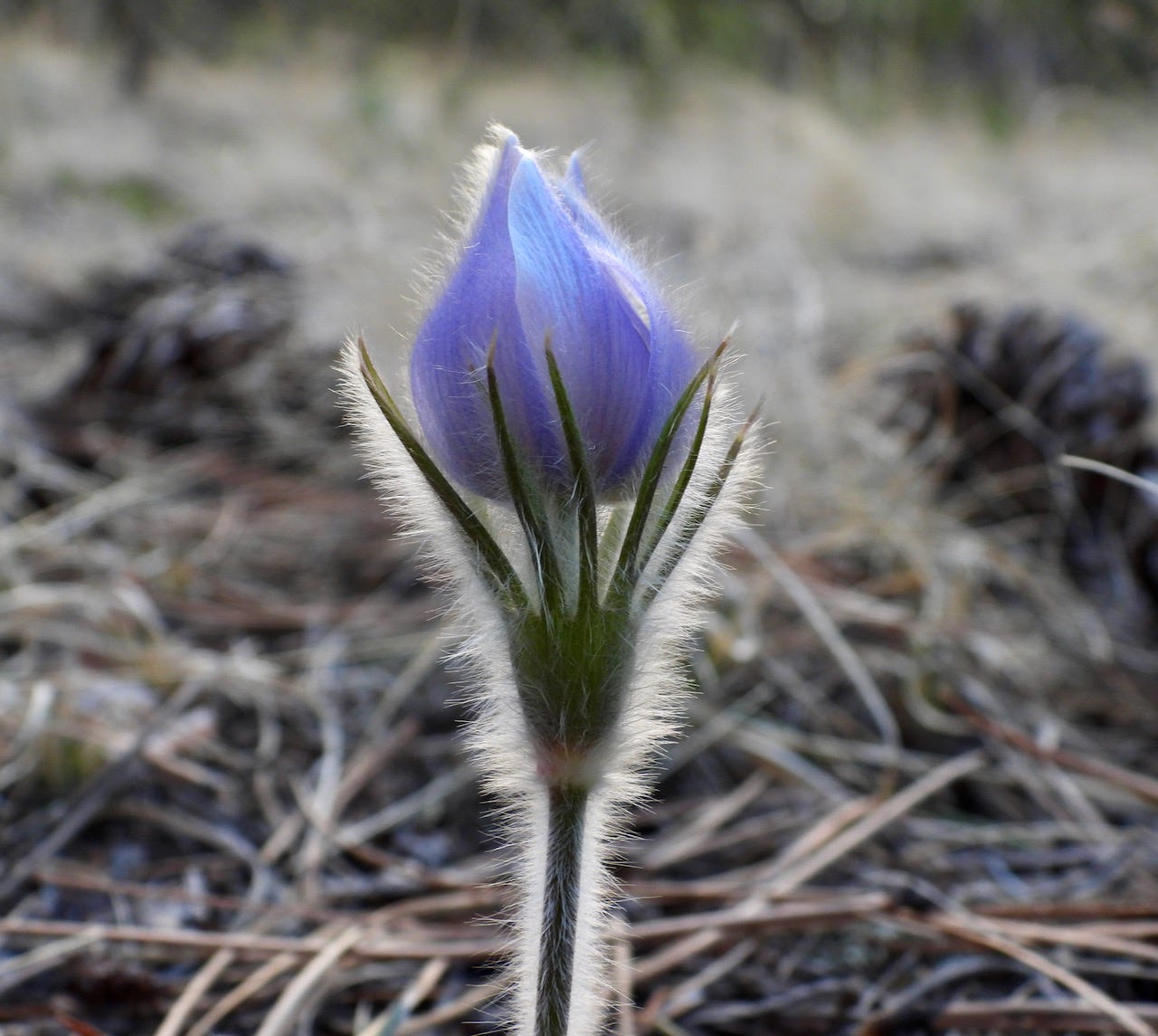We begin to watch for them to come up each April. Growing in the well drained, crumbled granite soil of our woods, the Pasqueflower (Pulsatilla nuttalliana) is one of the first to appear in the spring. It’s a welcome sight for eyes that are hungry for summer colors. Among the browns, tans, and evergreen colors, here’s a pop of purple for you. Let’s grab the camera, get down on the ground, brush away some pine needles and dry grass, and get a close look. Don’t touch it, though. We’ll get to that.
While Pasqueflower varieties grow around the world, I had never noticed them before moving to the Foothills. Their emergence is that sign that winter is losing its grip. They are armed to handle the Spring storms to come, though.
Handling the Spring storms takes some savvy adaptations. Starting with a base of a long, woody, years-old taproot, the flower waits in the soils for the longer, warmer days and extended sunshine. Rising up from the soil, one striking thing you’ll notice when you get a closer look is the fuzz. A dense coat of silky hairs cover the stem, the bracts (the thin, green leaves surrounding the base of the bloom), and the bloom itself. Zoom in on the bloom and it takes on a cotton-candy look.


So, what does this furry coating do? “There’s a lot of reasons for hairs on plants,” a botanist friend tells me. Along with holding water and nutrients for a tender young bloom, the hairs can deter insects from getting at the tasty nutrients in the stem, which would cut off its growth before it can bloom. The hairs also serve as a layer of insulation, holding snow off (see top photo) and keeping warmer air surrounding the growing bloom, all to protect the goods inside. Temperature measurements inside the emerging bloom are often found to be significantly warmer than the surrounding air.


The sun comes out, the air warms, and it’s time for the bloom to show off its stuff. It’s one of the first flowers for the newly emerging pollinators to visit. There’s a fascinating set of macro-photography showing the complex structure of the stamens, and how the fuzzy concepts continue right down to microscopic levels.
And this little flower has another self-protecting trick up its fuzzy, complex sleeve. It carries a cocktail of chemicals that can cause irritation and allergic reactions when touched, and even death if ingested enough. A grazing sheep encountering and munching on 30 blooms can ingest a lethal dose. Despite this, minute doses have been used in traditional medicine as analgesics (pain relief), anxiolytics (antianxiety), and sedatives.
We humans have noted this little flower for millennia. Named for its blooming proximity to Easter, or as the ‘Prairie Crocus’ in Canada. The Lakota call it "hoksi' cekpa" (child's navel). The Dakota, call it, "hokski-chekpa wahcha" (twin flower). The Blackfeet Nation call it "Napi" (old man) for the gray silky heads.1. Legends say that the flower springs from those places where the blood of Romans and Danes has been spilled. Which, as the same botanist friend pointed out, would be the whole of England!
I’m always glad to see them each year, showing the seasons are still with us and all the newness of Spring is ahead.
📷 All photos are credited: The Abert Essays unless otherwise noted.
📱 Join me on my Facebook page, Substack Notes, and my new BlueSky page. I post smaller ‘Encounters’ posts there as I see flowers, animals, weather patterns, and anything else that catches my eye.
📷 All photos are credited: The Abert Essays unless otherwise noted.
📱 Join me on my Facebook page, Substack Notes, and my new BlueSky page. I post smaller ‘Encounters’ posts there as I see flowers, animals, weather patterns, and anything else that catches my eye.
Sources:
- Many thanks to my botanist friend, Lawton, for his insights on the fuzzies.
- https://en.wikipedia.org/wiki/Pulsatilla_nuttalliana
- https://www.fs.usda.gov/wildflowers/plant-of-the-week/pulsatilla_patens_multifida.shtml
- http://www.minnesotaseasons.com/Plants/American_pasqueflower.html
https://en.wikipedia.org/wiki/Pulsatilla_nuttalliana







What a gorgeous flower! Never heard of it before